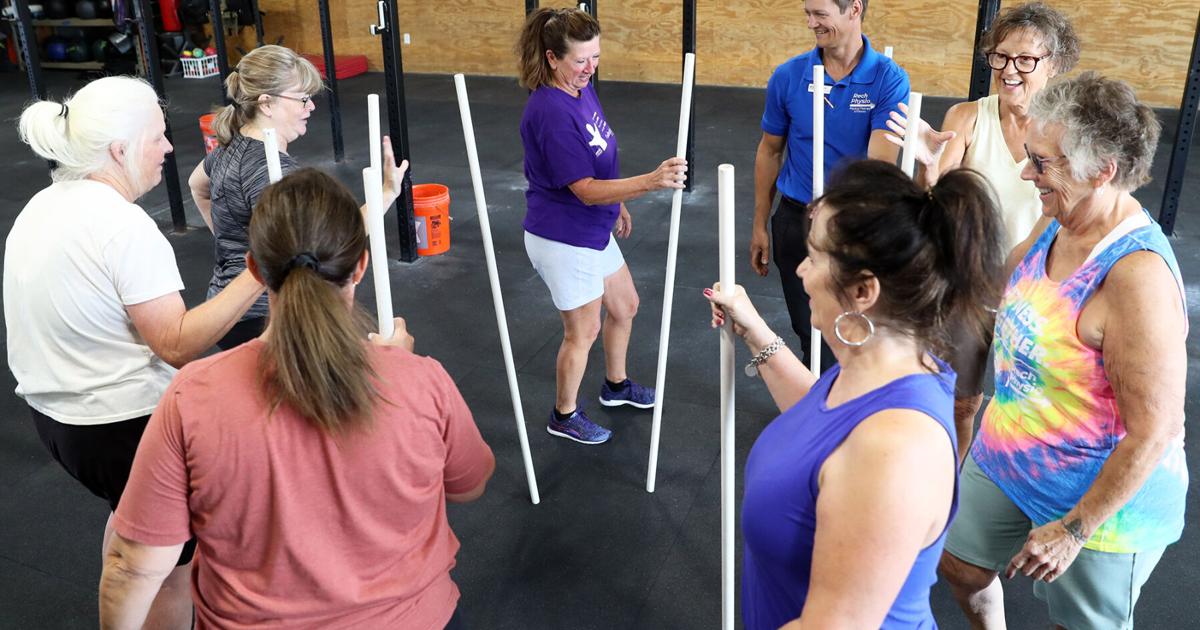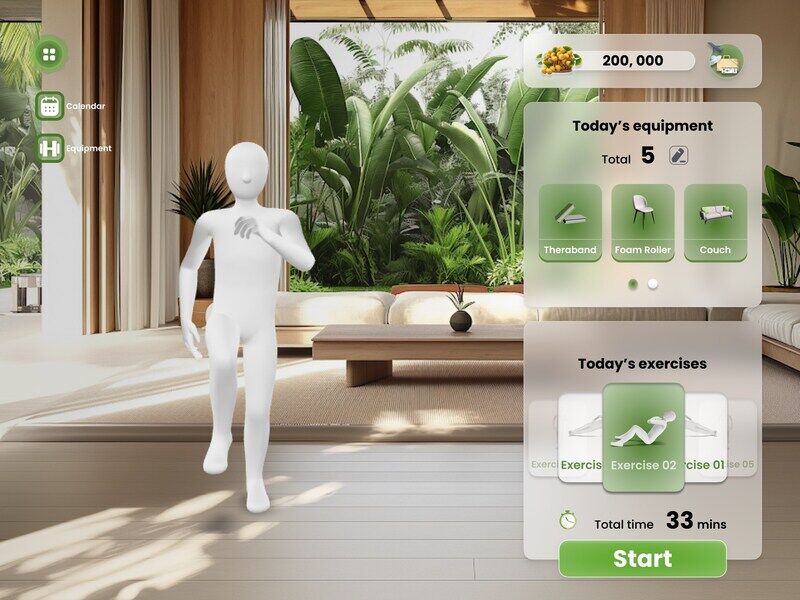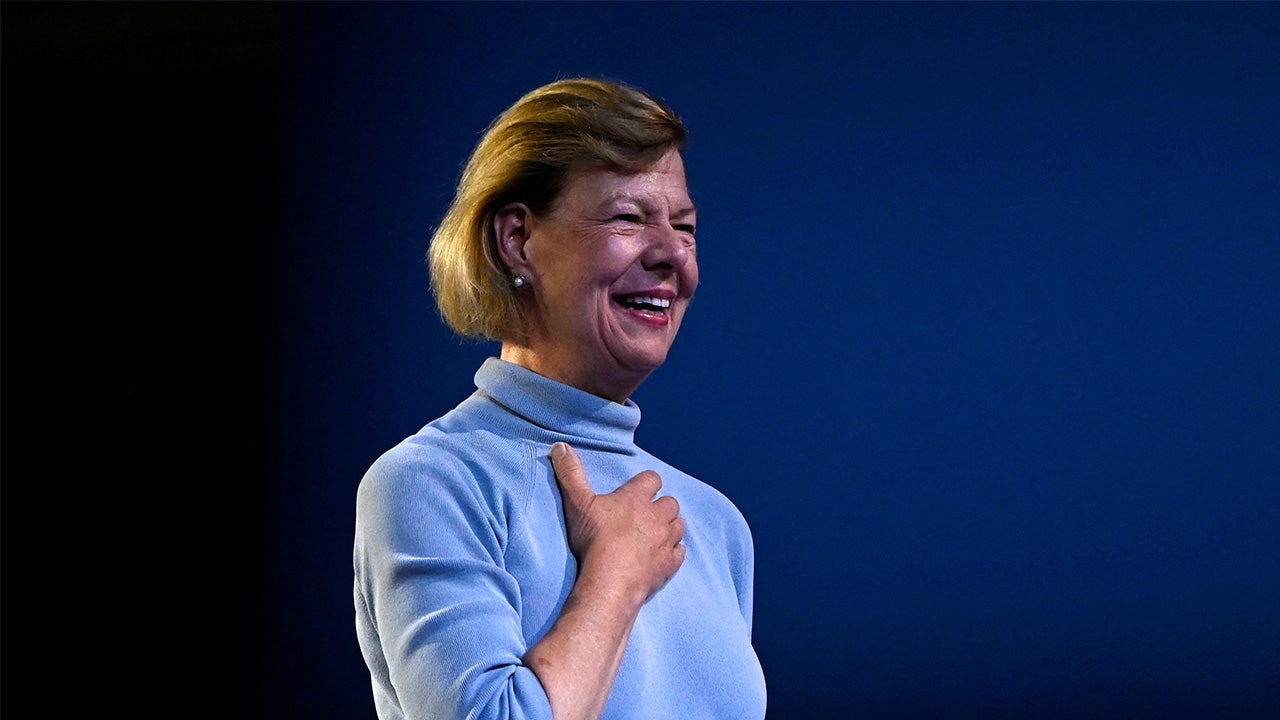A ribbon-cutting ceremony last week commemorated the one-year anniversary of the Strength and Balance Class provided by Rech Physio at at CrossFit GI, 411 S. Webb Road.
The goal of this collaboration between Rech Physio and CrossFit GI is to provide a safe and effective space for adults age 55 and older, as well as individuals desiring improved strength and capability in their bodies, to pursue their fitness goals.
Members of the Strength and Balance Class offered by Rech Physio walk 100 meters while carrying a 10-pound weight during a recent session at CrossFit GI at 411 S. Webb Road. The goal was to walk a total of 500 meters.
An open house provided attendees the opportunity to explore the equipment within CrossFit GI and learn about the specialized physical therapy services provided.
Members of Rech Physio’s team were on hand to answer questions and discuss how physical therapy can enhance performance and overall well-being. Therapists assessed individual needs and provide insights on injury prevention, recovery and performance optimization.
People are also reading…
Folks from Rech Physio and CrossFit GI both say they are committed to wellness and active living within the community.

Members of the Strength and Balance Class offer by Rech Physio play circle games as one of the exercises during a recent class led by Nick Rech at CrossFit GI.
Nick Rech is the owner of Rech Physio, a mobile physical therapy service in Grand Island.
“Our focus is on empowering older adults to live the retirement they imagined by helping them become strong and resilient,” Rech said.
He holds a doctorate in physical therapy from the University of Delaware and has experience working at Madonna Rehab hospital in Lincoln as part of the stroke team. He has a background in strength and conditioning, as well as athletic training.
“This allows me to design functional exercises that challenge older adults safely and effectively, helping them improve mobility and reduce pain,” Rech said.
The Strength and Balance classes at CrossFitGI meets twice a week, at 10:15 a.m. Tuesday and Thursday. Rech says each class is build around three principles: Embrace our community, challenge yourself and have fun.

Nick Rech of Rech Physio talks to those in attendance during the CrossFit GI one year anniversary gathering on Sept. 15.
Each class lasts about 45 minutes and includes time for warm-ups and stretching. The first class is free and Rech says new members are always welcome.
As a fitness center, CrossFit GI helps individuals of all fitness levels achieve their goals through challenging and varied workouts. The gym offers a supportive community and top-notch training programs and is a hub for fitness enthusiasts in the area.

Nick Rech of Rech Physio helps a member of the Strength and Balance Class with an exercise during class on Tuesday. Rech Physio has teamed up with CrossFit GI to offer the class that recently celebrated its first anniversary at the center.
Rech said the shared goal of the two organizations is to assist individuals in achieving their fitness objectives while prioritizing health and safety.
For more information about Rech Physio and its services go to www.rech.physio.






























/cdn.vox-cdn.com/uploads/chorus_asset/file/25739950/247386_Elon_Musk_Open_AI_CVirginia.jpg)
